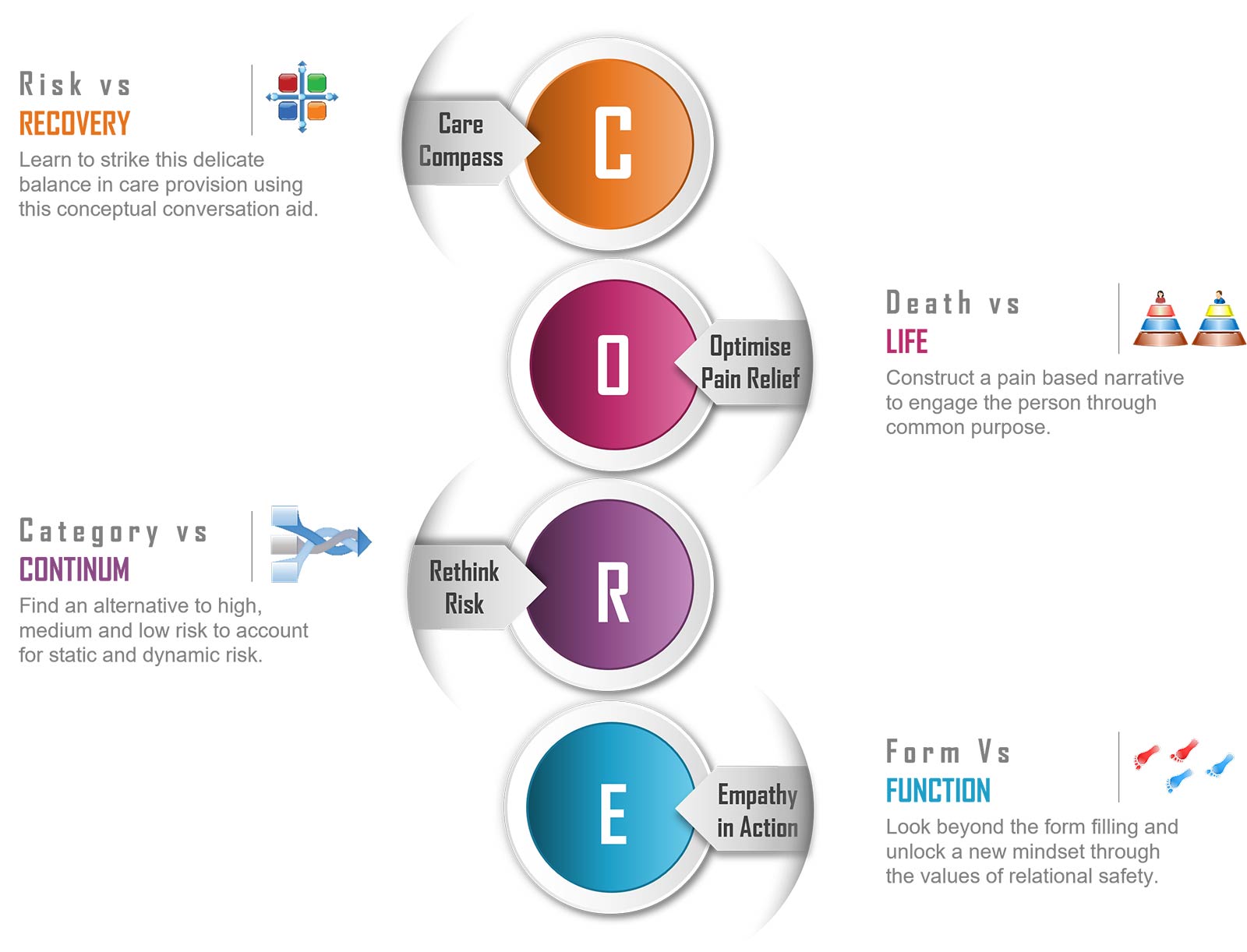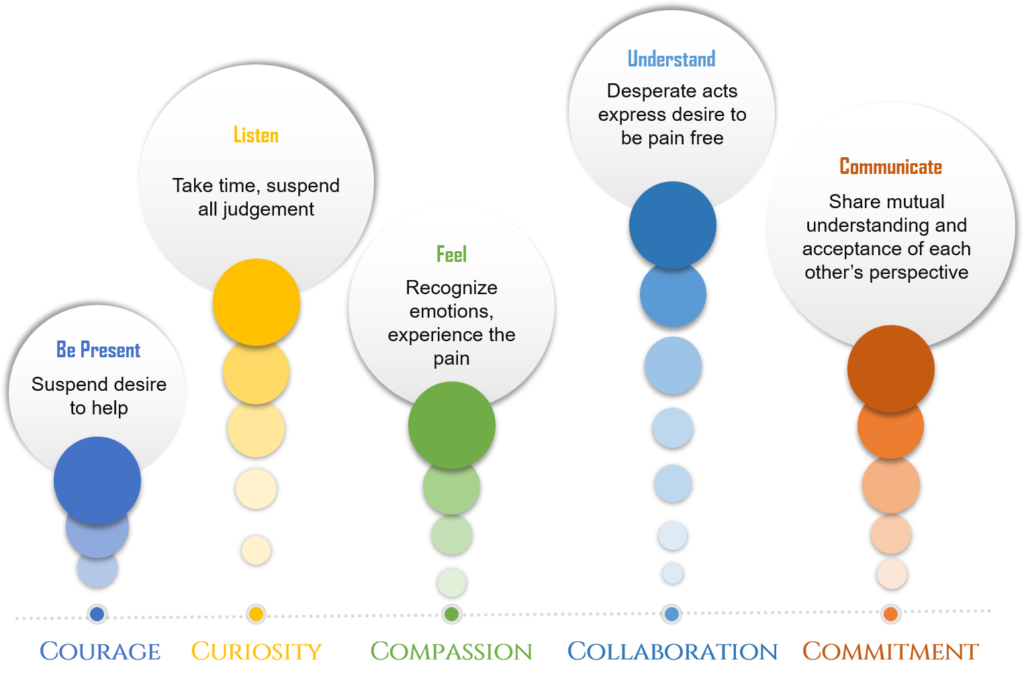Foundation Module for Suicide Prevention
Striking the balance between risk and recovery, life and death

What is CORE?
CORE, the first and foundational module in PROTECT introduces Relational Safety. Genuine curiosity and understanding shown by a fellow human being is healing and creates safety in the moment, safety far superior than any risk tool can ever achieve.
CORE includes a range of theoretical constructs and practical conversation aids like the Care Compass, Pain Relief Optimisation, a Risk Rethink and Empathy in Action. These tools support the professionals to strike the delicate balance that is needed in assessing and caring for a person in suicidal distress.
Relational Safety
Empathy in Action
Students learn about the values of relational safety and how to take values guided actions. The focus is on learning the skills to stay out of judgement and walk by a person who is contemplating suicide as their principal pain relief strategy. It’s a concept described in PROTECT as Empathy in action, in which meaning is constructed together, the person’s lived experience and the professional’s knowledge and expertise are equally valued.
Of the many shifts in thinking PROTECT attempts to bring about, the key one is moving from what’s the matter with you to what matters to you. Often what is important to the person lies at the heart of their psychological pain, if one can understand this the rest in terms of supporting the person’s safety and ongoing recovery will fall into place.

Learning Objectives
Gain Knowledge:
- How to strike a balance between risk and reovery?
- How to construct a pain based narrative?
- What are the different ways to conceptualise risk?
- What are the values that drive deep empathy?
- What are the behaviours that show deep empathy?
- What are the components of empathy?
Develop Understanding:
- What are positive risks and how does it compare to risk averse or risk prone behaviour?
- How to dig deep and see beyond the postions of living and dying that professionals and the person in distress take up?
- What is clear and/or imminent risk?
- How does empathy enhance safety?
- Why is deep empathy central to relational safety?
- Why is it important to understand one’s own response to the suicidal mind?
Refresh Skills:
- How to translate the 5 key values into tangible actions?
- How to engage in a pain relief conversation?
- How to engage the person and their family in shared decision making and taking ownership of safety and recovery?
- How to suspend judgement and the desire to help?
- How to listen and manage one’s own feelings when faced with overwhelming distress?
- How to gain the other persons perspective?
How do you communicate your understanding?
Module Content
Summary of topics covered in CORE
The first unit in CORE addresses the fundamental issue at the heart of supporting people in suicidal distress, i.e. how to strike a balance between risk and recovery. Students are introduced to a conceptual aid called the Care Compass which has four care quadrants (Prudent Care, Permissive Care, Prescrivitive Care and Precarious Care). Students are taught how to use this as a conversation aid with the person in distress as well as their families and together chart a course towards recovery. The focus on safety needs to gradually shift to self-reliance as the person moves from fragility feeling resilient, however it is a balancing act and through case studies these difficult to grasp abstract concepts are brought to life.
One of the biggest challenges for professionals supporting people in suicidal distress is that they may end up having polar opposite positions, the person in distress considering suicide to be the solution of life’s pain and the professional believing suicide to be the solution that ends all solutions. This may give rise to conflict and restrictive practice. In this unit students are taught how to construct a pain based narrative that illuminates a common goals and common ground, the person in distress wants pain relief and the porfessional wants the same, albeit using a slower strategy. Students are taught how to have this sensitive discussion and get the person on board and show that together the pain can be chipped away at or the tolerance to it can be enhanced.
A number of conventional risk asseessment and management courses propagate categorisation of patients into high, medium and low risk group, however there is significant evidence now to show that such risk stratification is not only inaccurate it is highly misleading if it is used to decide treatment allocation. In the CORE module students are taught to synthesise an opinion on clear and imminent risk after considering three different comparators (longitudinal risk, crossesctional risk and unaddressed risk). This is a far more nuanced way to manage risk and does help with clinical decisions and treatment allocation.
Students are introduced to the values of relational safety and how to incorporate these values into routine clinical practice in terms of concrete actions they may take. Empathy in action helps professionals transition from a mindset that espouses “what’s the matter with you” to one that attempts to establish “what matters to you”.
